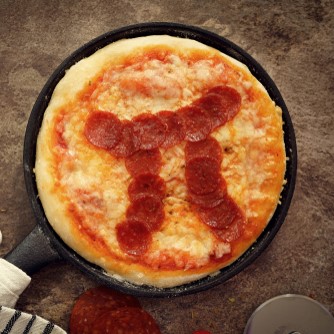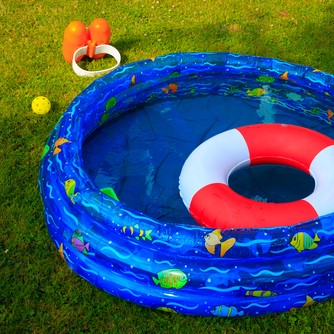
Well, it’s almost Pi (π) Day again! And once more, we find reasons to celebrate that most interesting number on March 14. Most of us remember that π is the ratio of a circle’s circumference to its diameter. And some of us even remember that it is an irrational number – that is, it cannot be represented as a simple fraction and the decimal fraction goes on forever without repeating. We can approximate its value with arbitrary precision – a couple of years ago one enthusiast calculated more than 22 trillion decimal places. In theory (if π is a “normal” number, as appears likely, though unproven) any string of numbers you can think of will appear somewhere in those digits: your birthday, your social security number, even your bank account number.
One of the reasons π is so intriguing is that it keeps showing up almost everywhere we look. And its uses range from answering practical everyday questions to exploring the deepest mysteries of the universe. Below, we share some ways in which π is used.
Everyday uses include formulas for circles and spheres (and some useful shortcuts). If you take the value of π as 3 and the radius equal to d/2, those intimidating formulas we all learned for circumference, area and volume become quite simple and are still accurate to better than 5%.
 |
First, the shortcuts:
|
Try them on these everyday questions:
 |
Is a 14 inch pizza for $10 a better deal than a 10 inch pizza for $5? (Answer: No) |
 |
How much frosting is needed to cover a cake 4 inches tall and 9 inches in diameter ¼ inch thick? (Answer: About 3 cups) |
 |
How much helium does it take to fill 100 balloons 10 inches in diameter? (Answer: A little over 30 ft3 at standard temperature and pressure, allowing for a 10% increase in pressure inside the balloon.) |
 |
How much water will it take to fill the kids’ 10 foot by 1 foot wading pool? (Answer: About 225 gallons) |
 |
I’m building a fire pit. How much flagstone do I need if it is 12 feet in diameter with a 3 foot fire ring in the middle? (Answer: A little over 100 ft3.) |
 |
How much gold leaf would it take to cover the U.S. Capitol dome? (Answer: Let’s say it’s a hemisphere about 30 m in diameter. That’s 1,350 m3 X 3 µm thick = 4,050 cm3. At 19.32 g/cm3 and $42/g that’s less than $350,000.) |
 |
“Siri, are you there?” Many voice recognition schemes rely on a Fourier transform (using π) to “fingerprint” the power spectrum of the voice and recognize the words you speak. |
Now we get a little more obscure:
 |
How does my calculator compute the values of trigonometric functions? (Answer: The algorithm probably does not include π explicitly (CORDIC or Taylor series algorithms are common) but it will want the input in radians, not degrees, and guess what, it needs π to convert (1 degree = π/180 radians)) |
 |
How much longer is a meandering river than the crow’s flight distance from source to mouth? (Answer: Turns out that the ratio tends toward π. Even Einstein spend some time figuring this one out.) |
 |
Will you change the station on the radio, please? Waves again. We tune in a station by adjusting the parameters of an electrical circuit to resonate at the frequency of the broadcast signal. |
 |
“Siri, are you there?” Many voice recognition schemes rely on a Fourier transform (using π) to “fingerprint” the power spectrum of the voice and recognize the words you speak. |